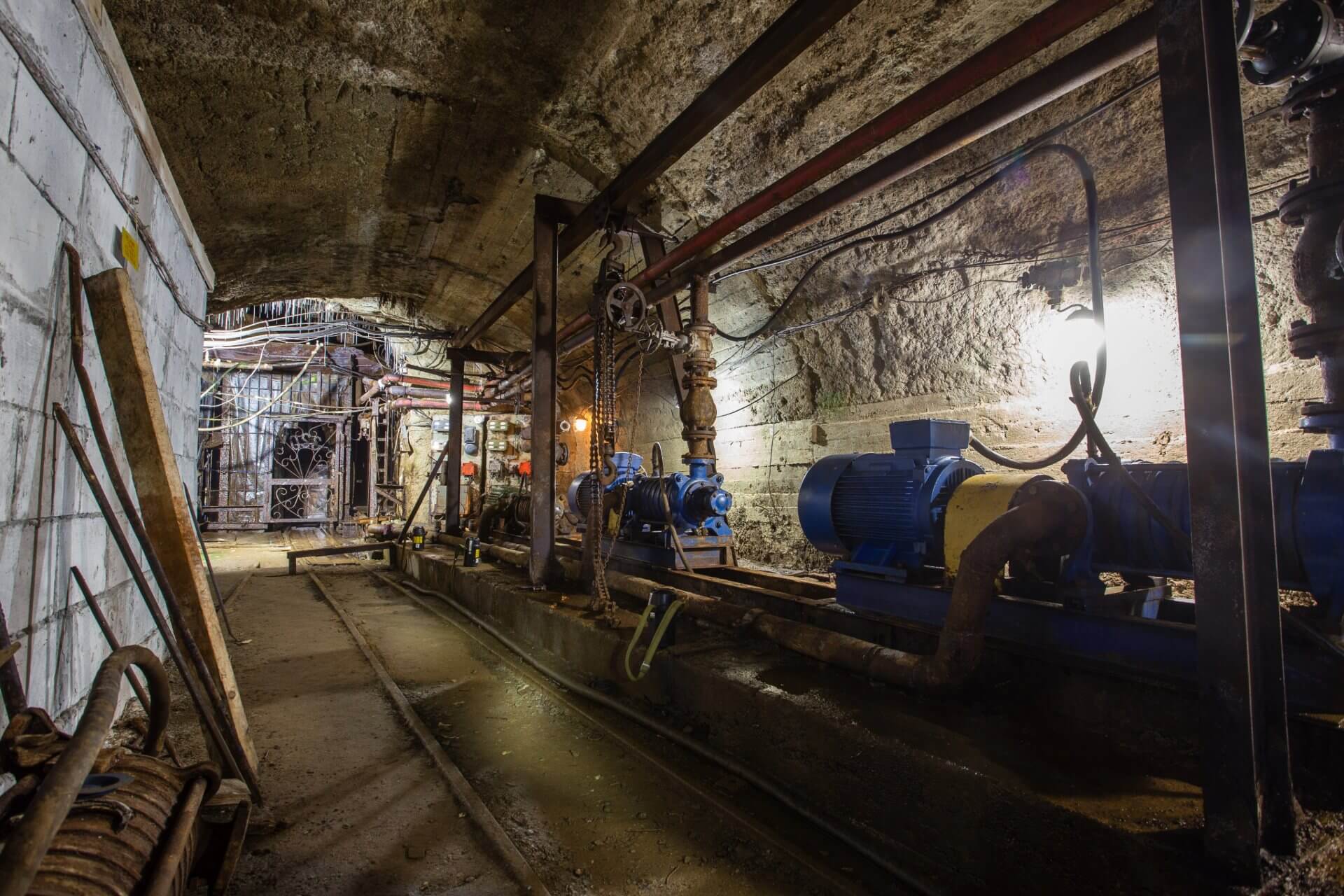In mining and other heavy industries, pump selection is more than a technical formality; it is a strategic decision that directly impacts safety, productivity, and long-term operating costs. Whether you’re draining groundwater from a deep open-pit mine or moving abrasive slurry from a processing area, the wrong pump can lead to cascading inefficiencies, unplanned downtime, and costly repairs.
Mining submersible pumps are widely used in such environments due to their ability to operate fully submerged and handle tough fluid compositions. These pumps are critical in high-demand applications such as pit dewatering, slurry transport, and emergency flood control. Unlike standard centrifugal pumps, submersible mining pumps are designed to work directly in the pumped media, making them ideal for confined or inaccessible spaces.
Improper sizing and selection of mining submersible pumps can result in several avoidable issues:
- Undersized pumps struggle to meet demand, leading to incomplete dewatering or system backlogs.
- Oversized pumps operate inefficiently, driving up energy costs and accelerating wear and tear.
- Failure to consider solids content may lead to clogging, impeller damage, or motor failure.
This guide outlines the key factors that procurement professionals and engineering managers need to evaluate before purchasing submersible pumps for mining sector operations. We’ll cover how to calculate and apply flow rate, total dynamic head (TDH), and solids content, and how these values influence pump performance and ROI in real-world applications.
Understanding Mining Submersible Pump Requirements
Mining operations present some of the harshest environments for pumping equipment. From abrasive solids and fluctuating water levels to corrosive fluids and unpredictable inflows, each site brings its own set of challenges. That’s why understanding the unique performance demands of mining submersible pumps is critical before making a purchase decision.
Submersible pumps for mining sector applications are typically deployed for:
- Dewatering flooded pits and underground tunnels
- Handling slurry mixtures containing fine or coarse solids
- Removing water from sumps, shafts, and holding tanks
Unlike conventional pumps that require external priming or are prone to cavitation when run dry, submersible mining pumps are fully sealed and designed to work below the water line. This setup offers operational simplicity, better suction reliability, and reduced infrastructure costs.
However, not all mining submersible pumps are built the same. Selection must be based on an in-depth understanding of the site’s physical and operational conditions. For example, in hard-rock mining where high concentrations of abrasive solids are common, standard-duty units may fail prematurely. In contrast, purpose-built submersible pumps for mining sector environments offer reinforced casings, wear-resistant impellers, and higher motor protection ratings to ensure sustained performance.
Common mining pump challenges include:
- High solids content: which increases abrasion and clogging risk
- Deep lifts: which require higher head pressure and energy input
- Corrosive fluids: which degrade internal components if the wrong materials are used
Selecting the right submersible mining pumps directly affects system uptime, reduces manual intervention, and improves worker safety by minimizing pump-related failures. Moreover, a properly specified pump ensures that operational targets,such as dewatering rates or slurry throughput,are consistently met, resulting in better overall project efficiency.
Investing in well-matched mining submersible pumps can lead to lower total cost of ownership and more predictable maintenance schedules. When chosen with accurate data on flow, head, and solids, submersible pumps for mining sector operations become an asset rather than a liability, supporting long-term performance and reliable output even in the most demanding conditions.
Key Sizing Parameters: Flow, Head, and Solids
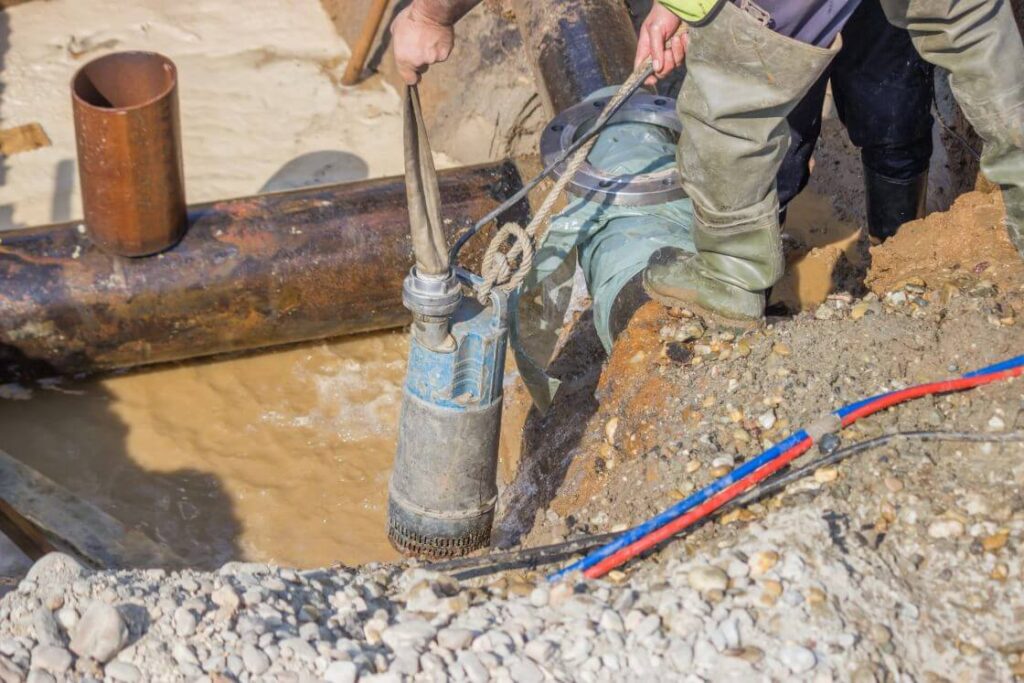
When specifying mining submersible pumps, accurate sizing is essential to ensure reliable performance under real-world mining conditions. The three most critical parameters,flow rate, total dynamic head (TDH), and solids content,determine whether a pump can handle the operational demands of the site without premature failure or energy inefficiencies.
A. Flow Rate: How Much Water or Slurry Are You Moving?
Flow rate refers to the volume of liquid or slurry that a pump must move over a specified period of time. For submersible pumps used in mining sector applications, flow is typically measured in liters per minute (L/min), gallons per minute (GPM), or cubic meters per hour (m³/h). It’s a foundational metric that directly impacts the size and power rating of the pump selected.
To calculate flow requirements, assess the total operational volume that must be pumped and the timeframe in which it must be removed. This is especially important for pit dewatering, where seasonal inflows or flooding can create high-volume, short-window pumping demands.
Operational Flow Rate Formula:
Flow Rate (L/min)=Total Volume (L)Time (min)\text{Flow Rate (L/min)} = \frac{\text{Total Volume (L)}}{\text{Time (min)}}Flow Rate (L/min)=Time (min)Total Volume (L)
Example:
If a mine needs to remove 24,000 liters of water within 2 hours (120 minutes), the required flow rate is:
24,000120=200 L/min\frac{24,000}{120} = 200~\text{L/min}12024,000=200 L/min
Various tools can be used to measure or estimate flow:
- Inline flow meters for existing systems
- Manual collection and timing methods in smaller sumps
- Historical site data for recurring or seasonal flows
Correctly estimating flow ensures that mining submersible pumps operate within their optimal performance range, avoiding both underperformance and unnecessary wear.
B. Total Dynamic Head (TDH): Calculating the Lift and Resistance
Total dynamic head (TDH) refers to the total height and resistance a pump must overcome to move water or slurry from its source to the discharge point. For submersible pumps used in mining sector sites, TDH must account for static elevation, friction losses in the piping system, and any required discharge pressure.
TDH Components:
- Static Head – Vertical lift from the pump intake to the discharge point.
- Friction Loss – Resistance in pipes, bends, and valves due to water movement.
- Discharge Pressure – Pressure required at the outlet (e.g., for spray bars or separators).
TDH Formula:
TDH (m)=Static Head+Friction Loss+Discharge Pressure\text{TDH (m)} = \text{Static Head} + \text{Friction Loss} + \text{Discharge Pressure}TDH (m)=Static Head+Friction Loss+Discharge Pressure
Example Calculation:
- Static Head: 40 m
- Friction Loss: 10 m
- Discharge Pressure: 20 m
TDH=40+10+20=70 m\text{TDH} = 40 + 10 + 20 = 70~\text{m}TDH=40+10+20=70 m
Neglecting proper TDH calculation can lead to poor pump selection. Pumps with insufficient head may struggle to move fluids, while oversized units may cycle improperly or consume excess power.
Mining submersible pumps must be matched to TDH demands using pump performance curves provided by the manufacturer. These curves illustrate how each model performs under varying flow and head conditions, enabling precise equipment selection.
C. Solids Content: Pumping More Than Just Water
Most submersible mining pumps do not just deal with water; they are pumping a slurry that may include rock fragments, tailings, sand, and other abrasive solids. Ignoring solids content is one of the most common and costly mistakes in pump sizing for the mining industry.
To ensure compatibility, select mining submersible pumps engineered specifically for solids handling. This includes:
- Impeller design (vortex or semi-open) to allow large solids to pass without clogging
- Wear-resistant materials such as high-chrome iron or polyurethane
- Wider clearances to accommodate abrasive particles
The concentration and size of solids have a significant impact on the pump’s wear rate, efficiency, and maintenance requirements. Standard submersibles may fail prematurely in mining applications, which is why submersible pumps for mining sector installations must prioritize durability and solids-handling capabilities.
A poorly matched pump may experience:
- Clogging or blockage in the impellers or discharge ports
- Accelerated wear on seals, bearings, and casings
- Unexpected shutdowns, leading to delays and increased labor costs
Selecting purpose-built submersible mining pumps reduces these risks, ensuring longer operational life, predictable maintenance schedules, and better ROI.
Calculating Pump Size: Matching Specs to Site Conditions
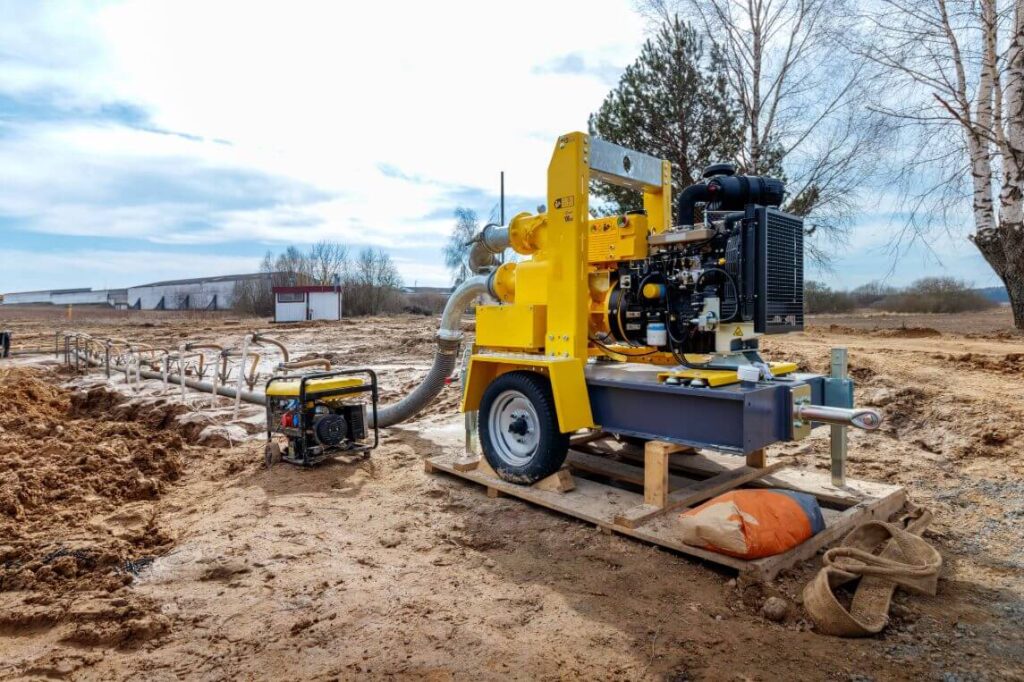
Accurately sizing mining submersible pumps requires more than rough estimates. A systematic approach ensures that the selected unit performs efficiently across the site’s entire operational range. The three-step method below outlines how to match pump specifications to real-world mining conditions properly.
Step 1: Define Flow and Head Requirements
Begin by combining the two critical values you’ve already calculated, flow rate and total dynamic head (TDH). Together, these values define the duty point, which is the performance benchmark that your pump must meet.
Understanding the duty point is essential when selecting submersible pumps for mining sector operations. The flow rate defines how much water or slurry must be moved, while the TDH defines how far and how hard that fluid must be pushed. Selecting a pump that matches this exact point helps ensure energy-efficient operation and system reliability.
When choosing mining submersible pumps, always look for a model that can meet this duty point without operating at the edge of its performance range. Pumps operating near their maximum capacity often experience increased wear, higher energy consumption, and a reduced lifespan.
Step 2: Use Manufacturer Performance Curves
Once flow and head requirements are defined, the next step is to consult the pump manufacturer’s performance curves. These charts illustrate the relationship between flow rate and head for each pump model, enabling engineers and procurement teams to identify the best fit.
Reading pump curves:
- Find the duty point on the graph (intersection of flow rate and TDH).
- Select a pump that operates efficiently at this point, not below or above it.
- Check for performance margins to ensure the motor can handle peak loads without overloading.
Example Sizing Table:
| Parameter | Value | Purpose |
| Flow Rate | 250 L/min | Water removal rate |
| Total Dynamic Head | 70 m | Vertical lift + friction + pressure |
| Duty Point | 250 L/min @ 70 m | Target performance |
| Pump Model Selected | XYZ-250/75 | Based on the performance curve |
| Efficiency Range | 68%–72% | Operational sweet spot |
This selection method ensures that submersible mining pumps operate within optimal efficiency zones, extending pump life and minimizing energy costs.
Step 3: Factor in Power, Efficiency, and System Constraints
Beyond hydraulic performance, site-specific constraints must also guide the selection of pumps. These include:
- Power Supply Compatibility: Ensure the pump motor is compatible with the site’s electrical system in terms of voltage, phase (single or three-phase), and frequency.
- Motor Size and Efficiency: Higher-efficiency motors reduce energy usage and operating costs, especially critical in continuous-run mining submersible pumps.
- Net Positive Suction Head (NPSHa/NPSHr): While submersible pumps are generally not limited by suction head, it’s still important to verify cavitation risk in certain designs or shallow installations.
- Physical Constraints: Confirm the selected pump’s dimensions fit within the borehole, sump, or pit structure. Oversized pumps may require structural modifications or may not be deployable at all.
Considering these constraints ensures a holistic selection process for submersible pumps for mining sector applications, one that balances performance, energy efficiency, and physical feasibility.
Application-Specific Considerations in the Mining Sector
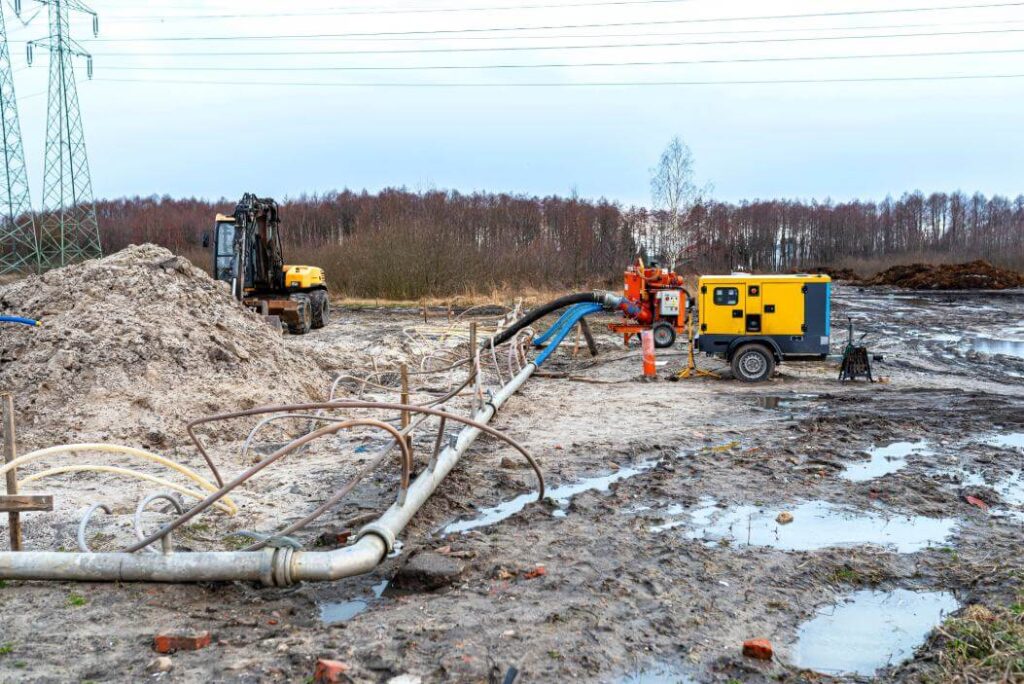
Mining submersible pumps are not one-size-fits-all solutions. Different mining scenarios demand different design priorities and pump features. Understanding these variations is crucial for making cost-effective and reliable equipment choices.
Dewatering vs. Slurry Transport
In dewatering, the objective is the rapid removal of water from pits, shafts, or tunnels. The focus is on high flow rates, moderate head, and continuous operation. Here, submersible pumps for mining sector applications must withstand sediment-laden water, often with fluctuating inflows and outflows.
In contrast, slurry transport involves high solids content,such as tailings, ore fines, or mud,and requires submersible mining pumps with robust impeller designs, hardened casings, and clog-resistant flow paths. The pump’s ability to handle abrasive materials is just as important as flow and head specifications.
Open-Pit vs. Underground Mining Needs
- Open-pit mining often involves large volumes of surface or groundwater that collect in excavated zones. Pumps here must offer high flow capacity, long service intervals, and mobility for relocation as excavation deepens.
- Underground mining demands compact, high-head mining submersible pumps that can fit into narrow shafts or sumps. These systems may face high static head and require corrosion- and explosion-resistant features.
Use Cases and Pump Selection Examples
- Flooded Pits
High-capacity pumps with moderate head ratings are used to remove stormwater or inflow. Portability and rapid deployment are critical. - Tailings Ponds
Pumps must handle thick slurry and corrosive materials. Selection should prioritize abrasion resistance and solids-handling capacity. - Sludge Removal
In beneficiation plants or sediment basins, submersible mining pumps must operate efficiently in dense, viscous mixtures. Open or recessed impellers are preferred to prevent clogging.
Custom Configurations for High-Wear Environments
Mining often presents extreme wear conditions, including sharp solids, high pH levels, or chemically laden fluids. To address this, submersible pumps for mining sector installations may require:
- Ceramic-coated components
- High-chrome steel impellers
- Dual mechanical seals with external flush
- Heavy-duty cable and seal systems
These configurations extend equipment life and reduce unplanned downtime, making them a smart investment in high-abrasion environments.
Mistakes to Avoid When Sizing Submersible Pumps
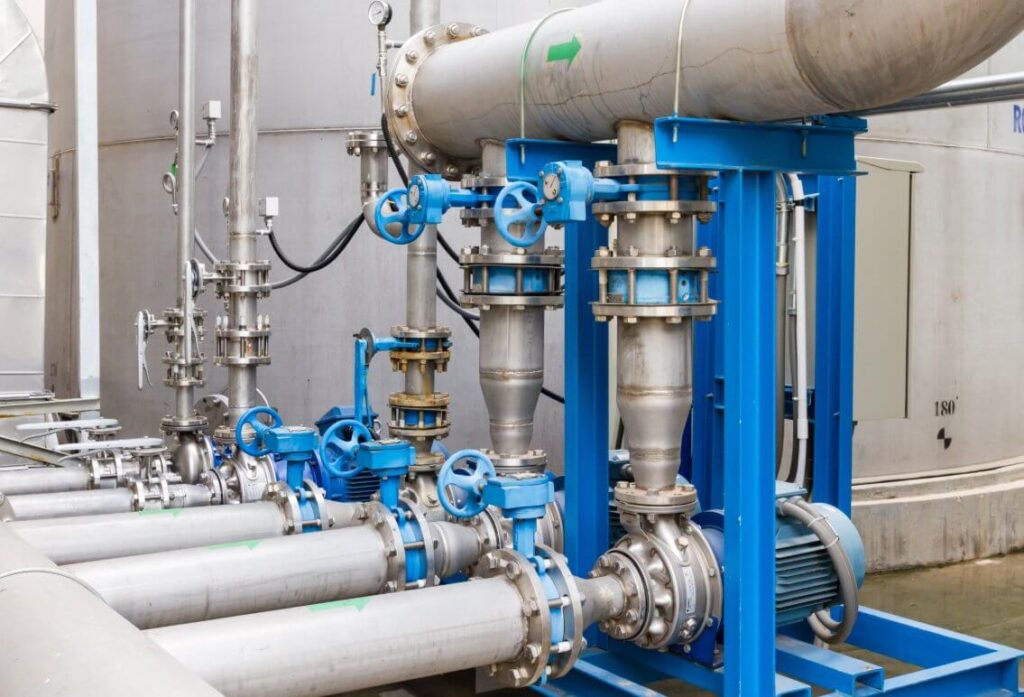
Despite the availability of performance data and advanced selection tools, many mining operations still make avoidable errors when choosing mining submersible pumps. These missteps can lead to poor performance, premature equipment failure, and increased operating costs.
Oversizing or Undersizing the Pump
Selecting a pump that is too small for the application will lead to insufficient flow, frequent overloading, and unplanned downtime. Conversely, an oversized unit may operate outside its optimal efficiency range, causing vibration, heat buildup, and wasted energy.
For submersible pumps used in mining sector operations, precise alignment with the duty point is crucial. Operating even slightly off-spec can shorten equipment lifespan and disrupt operations.
Ignoring Solids Concentration
One of the most common mistakes is assuming that water with minor debris behaves the same as slurry. In mining, water often carries sand, silt, tailings, or rock fragments. Ignoring the solids content leads to rapid wear, impeller damage, and pump clogging.
Submersible mining pumps are specifically engineered to manage abrasive or high-solids content. Selecting a clean-water pump for slurry applications not only reduces performance but also increases the risk of catastrophic failure.
Using Clean-Water Pump Specs in Slurry Applications
A related error is selecting pumps based solely on clean-water curves. Slurry behaves differently than water, with higher viscosity, density, and friction loss. This alters the effective flow and head requirements, which must be adjusted accordingly.
Mining submersible pumps should always be evaluated using manufacturer-provided slurry performance data. Relying on clean-water assumptions in a slurry-heavy environment can result in undersized motors, seal failures, and chronic downtime.
Misinterpreting TDH or Flow Requirements
Inaccurate estimation of flow rate or total dynamic head (TDH) is another frequent cause of poor pump performance. Overlooking pipe friction losses, valve restrictions, or elevation changes results in pumps that can’t meet actual demands.
For submersible pumps for mining sector projects, thorough measurement and proper calculation of TDH,including static head, friction loss, and discharge pressure,are non-negotiable.
Overlooking Manufacturer Consultation and Site Testing
Skipping consultation with experienced pump manufacturers is a costly oversight. These professionals offer insight into application-specific details, material compatibility, and performance tolerances.
Site testing is equally important, especially in complex or remote mining environments. Even the most advanced mining submersible pumps perform optimally when selected based on real-time data and input from technical partners.

Maximizing ROI with Proper Pump Selection
Proper sizing and selection of mining submersible pumps are not just technical best practices; they are strategic moves that enhance operational reliability and long-term financial performance. When pumps are tailored to site-specific demands, the benefits extend across energy savings, reduced downtime, and maintenance efficiency.
How Correctly Sized Pumps Reduce Operational Downtime
Pumps that align with flow and head requirements experience less stress during operation. This minimizes mechanical wear, prevents motor overload, and reduces the likelihood of emergency shutdowns.
In high-demand environments, submersible mining pumps that perform consistently enable uninterrupted operations, keeping excavation schedules and production targets on track.
Energy Efficiency and Lifecycle Cost Reduction
Oversized or misaligned pumps often draw more power than necessary. A properly selected pump, operating near its best efficiency point (BEP), consumes less energy while delivering optimal output.
Over the pump’s lifecycle, the energy savings from an efficient mining submersible pump can far exceed initial equipment costs. For high-volume operations, even small improvements in efficiency translate into substantial annual savings.
Maintenance Savings Through Better Fit-for-Purpose Equipment
When pumps are selected without regard to slurry content, pipe layout, or pressure demands, breakdowns are inevitable. In contrast, submersible pumps for mining sector applications, sized for solids, wear, and corrosion, exhibit fewer mechanical failures and longer service intervals.
Lower maintenance frequency means fewer labor hours, reduced parts inventory, and less production disruption.
Partnering with Experienced Suppliers for Long-Term Performance
A key factor in maximizing ROI is working with suppliers who understand the operational nuances of the mining industry. Experienced vendors offer tailored solutions, access to application engineers, and performance guarantees based on site data.
Selecting the right submersible mining pumps with expert guidance ensures compatibility with power systems, pit design, and operational cycles. This strategic alignment leads to greater reliability and sustainable performance under challenging field conditions.
Conclusion & Next Steps
Choosing the right mining submersible pumps starts with a precise understanding of your site’s requirements. Accurately determining flow rate, calculating total dynamic head (TDH), and accounting for solids content are non-negotiable steps in the sizing process. These core parameters ensure your selected pump delivers reliable performance, withstands abrasive conditions, and operates within optimal efficiency zones.
For demanding applications in dewatering, slurry transfer, or sediment removal, mining submersible pumps must be more than powerful; they must be engineered specifically for the job. Relying solely on standard specifications or assumptions can lead to oversizing, rapid equipment failure, or increased energy consumption. That’s why it’s critical to consult manufacturer performance data and leverage technical expertise when evaluating options.
Plus Pumps offers a wide range of purpose-built mining submersible pumps designed to perform in aggressive mining environments. Whether you’re sourcing pumps for an open-pit dewatering system or a tailings pond application, our team can help match the right pump to your operational needs. By aligning your selection with verified flow and head requirements, you reduce downtime, minimize maintenance, and maximize return on investment.
Let us help you navigate the selection process with confidence:
- 👉 Contact Plus Pumps for Equipment Consultation
Get expert guidance tailored to your site conditions and performance requirements. - 🔧 View Our Range of Submersible Mining Pumps
Explore heavy-duty, high-performance solutions engineered for long service life and minimal downtime.
Don’t leave pump performance to chance; ensure your mining submersible pumps are the right fit from day one. Partner with a team that understands your industry, your site conditions, and your goals.


